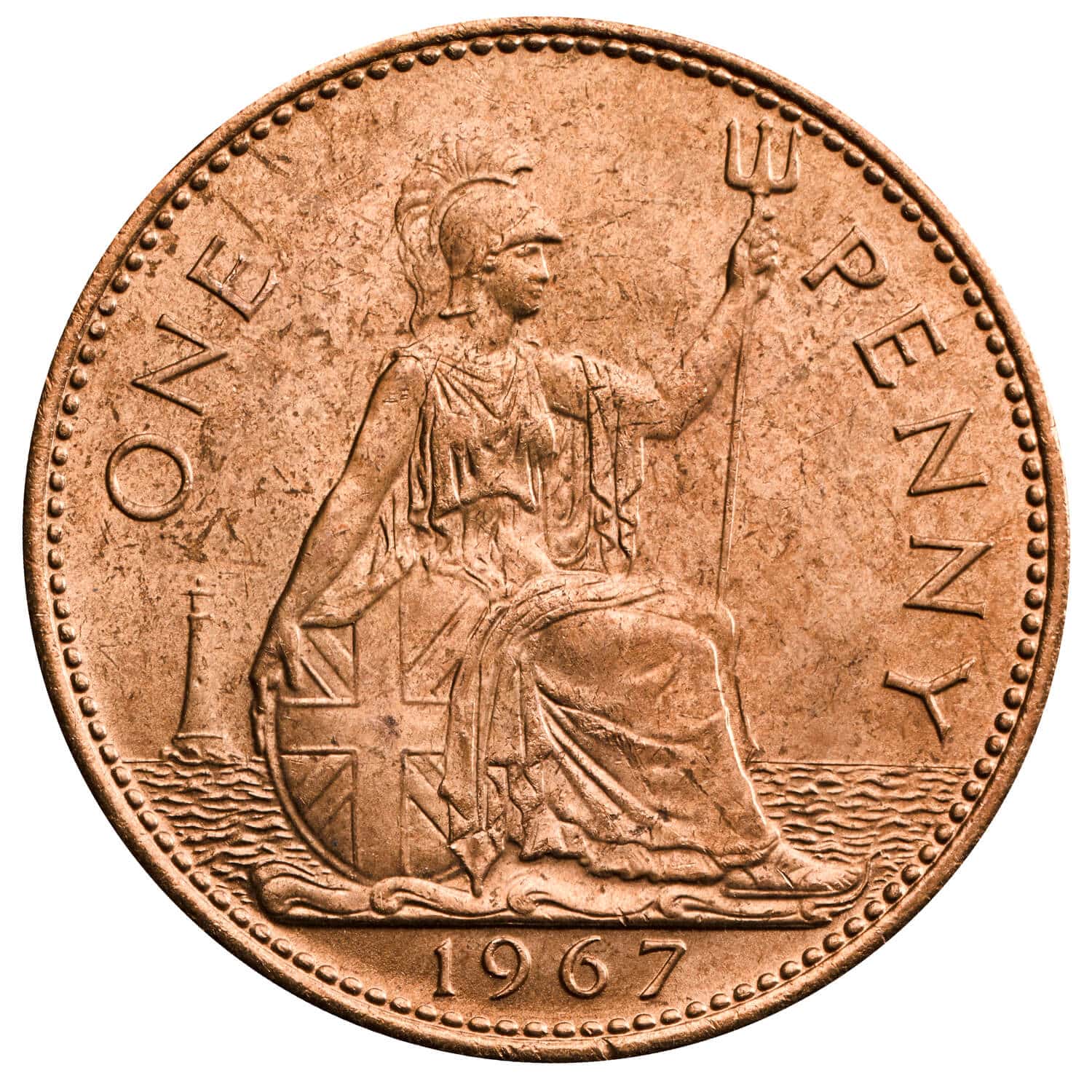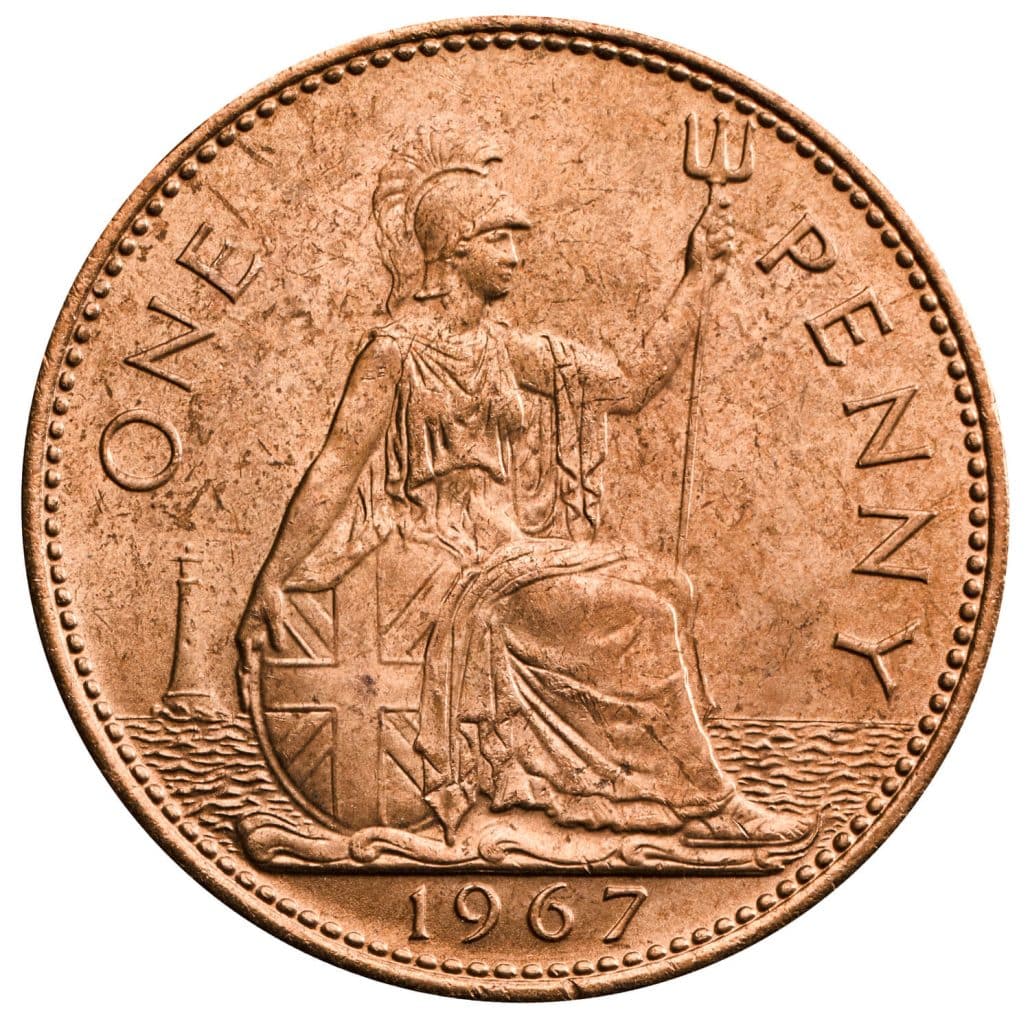In the world of numismatics, the 1967 Queen Elizabeth II Penny has stirred the curiosity of collectors and historians alike, symbolizing a pivotal moment in British coinage history just before the switch to decimal currency. The rarity and historical significance of these pennies make them a subject of fascination and potential hidden treasure within the realm of coin collection.
This article delves into the factors influencing the value of the 1967 Queen Elizabeth II Penny, exploring its uniqueness, rarity, and the broader context of its circulation. Through an examination of numismatic principles and specifics of the Elizabeth II era coins, readers will gain insight into why this penny captures the imagination of collectors and historians.
Understanding the 1967 Queen Elizabeth II Penny
Historical Context
The 1967 penny holds a significant place in British numismatics as it marks the final year of the pre-decimal coinage. Minted extensively in the lead-up to Decimal Day in 1971, these coins were part of a broader transition in the UK’s monetary system. The introduction of decimal currency was a monumental change, affecting the entire nation as people adapted to a new system of coinage, which eventually replaced the old pennies valued at 1/240 of a pound.
Design and Symbolism
The design of the 1967 penny features the iconic image of Britannia seated left, holding a trident, which is a symbol deeply rooted in British maritime prowess and national identity. The obverse of the coin displays a young portrait of Queen Elizabeth II, designed by Mary Gillick, reflecting a youthful and optimistic post-war Britain. This portrait was part of a series that commemorated the new Elizabethan era, starting from her proclamation as queen in 1952.

Production Numbers
In 1967, the mint produced a staggering total of 654,564,000 pennies. This massive production aimed to stockpile coins before decimalisation rendered the old denominations obsolete and to prevent public hoarding due to nostalgic sentiments about the upcoming currency change. Despite this high production number, uncirculated 1967 pennies are common. They encapsulate a significant moment in the history of British coinage, making them a fascinating subject for both casual collectors and numismatic scholars.
Factors Influencing the Value of Collectible Coins
In the fascinating world of numismatics, the value of a collectible coin is not merely a reflection of its face value but a complex interplay of several critical factors. Understanding these factors can help collectors and investors alike to navigate the market more effectively and make informed decisions about their collections. Here, we delve into the primary elements that influence the worth of collectible coins, including rarity, condition, demand among collectors, and unique features.
Rarity
The scarcity of a coin significantly impacts its value. Coins minted in limited quantities or those with unique design elements or historical significance can fetch high prices at auctions. Minor variations in the minting process can also contribute to a coin’s rarity, making it highly sought-after by collectors. For instance, coins with minting errors or those from a specific year with low production numbers are often considered more valuable due to their scarcity.
Condition
A coin’s condition is a paramount factor that affects its valuation. Coins in mint or uncirculated condition, showing no signs of wear or damage, are typically more valuable than those that have been circulated. The grading of coins, a process that assesses their authenticity and condition, plays a crucial role in determining their market worth. Professional grading services provide an objective analysis, offering grades that help investors and collectors understand a coin’s value better.
Demand among Collectors
Market demand is another critical determinant of a coin’s value. When there is high demand for a particular coin, its price can significantly increase. Conversely, low demand can lead to a decrease in value. Economic conditions, market volatility, and trends among collectors can all influence demand. For example, coins from popular series or those with historical significance tend to be more sought-after, driving up their prices.
Unique Features
Coins with unique features, such as exceptional designs, historical importance, or special minting characteristics, often attract higher interest from collectors. These features can include everything from the aesthetic appeal of the coin’s design to its place in history. Limited-edition releases or coins with special designations (e.g., color, strike characters) can also enhance a coin’s collectibility and, consequently, its value.
In summary, the worth of collectible coins is influenced by a blend of rarity, condition, demand, and unique characteristics. Each of these factors plays a crucial role in determining the market value of a coin, making the field of numismatics both challenging and rewarding for enthusiasts and investors alike.
Is the 1967 Penny Rare or Valuable?
When assessing the rarity and value of the 1967 Penny – Queen Elizabeth II, it’s crucial to consider various aspects that contribute to its standing in the numismatic community. Despite the high minting numbers leading up to Decimalisation Day, certain characteristics and conditions elevate some of these pennies above their face value.
Comparing to Other Collectible Coins
The condition and unique features of the 1967 Penny significantly influence its value. In contrast to coins minted in limited quantities or with historical significance, the U.S. Mint produced the 1967 Penny in vast numbers, exceeding 655 million units. This extensive production generally means these pennies are not considered rare. However, collectors find specific examples more desirable if they possess exceptional conditions or unique characteristics, such as minting errors. For instance, collectors are willing to pay higher prices for a 1967 Penny struck on a dime planchet or exhibiting a double strike error.
Expert Opinions
Experts in the field of numismatics suggest that the value of a 1967 Penny largely depends on its condition and rarity. Coins in uncirculated condition or those that have been double struck, multi-struck, or exhibit other minting errors are more likely to be sought after by collectors. According to reputable coin dealers and appraisers, circulated coins from 1967, unless in AU (almost uncirculated) or at least XF (extremely fine) condition, are typically only worth their face value. Consulting with a professional can provide a more accurate valuation based on current market trends and the specific characteristics of the coin.
Market Trends
Additionally, collectors also find coins struck off-center or with die caps attractive, further emphasizing the importance of condition and uniqueness in determining a coin’s value.
In summary, collectors do not typically consider the 1967 Penny a rare or highly valuable collectible, but certain conditions and unique characteristics can elevate its status among numismatists. Understanding the factors that influence its value, including condition, rarity, and market trends, is essential for collectors looking to assess the worth of their 1967 Penny.
How to Determine the Worth of Your 1967 Penny
Determining the value of a 1967 Queen Elizabeth II Penny involves several steps and considerations, from assessing its condition and rarity to understanding the current market demand. This section will guide you through identifying marks of authenticity, tools for valuation, and consulting with numismatists to accurately determine the worth of your 1967 penny.
Identifying Marks of Authenticity
- Examine Features for Authenticity: A genuine 1967 penny should have clear and distinct imagery, with no blurred areas or inconsistencies.
- Check Weight and Size: Authentic pennies have specific weight and dimensions. Any deviation could indicate a counterfeit.
- Listen to the Sound: Drop the penny on a hard surface; the sound it makes can also be an indicator of authenticity.
- Look for Notch Defects: Notch defects, resulting from the minting process, can sometimes add to a coin’s value if they result in rarity.
Tools for Valuation
- Use Coin Catalog Apps: Apps like PCGS Coin Facts and CoinManage provide up-to-date information on coin values and can help in the initial assessment.
- Employ Coin Identification Apps: Tools like CoinSnap and Coinoscope allow you to upload a photo of your penny for a quick valuation estimate.
- Reference Online Platforms: Platforms such as eBay can offer insights into how much similar coins are being sold for, giving you a rough idea of your coin’s market value.
Consulting with Numismatists
- Professional Appraisal: For an accurate valuation, consulting with a professional coin dealer or appraiser is advisable. They can offer insights based on the current market demand and the specific characteristics of your coin.
- Coin Grading Services: Submitting your coin to a grading service like NGC or PCGS can provide an objective assessment of its condition, crucial for determining its market value.
- Connect with Coin Collecting Communities: Engaging with online forums and local coin collecting clubs can provide valuable insights and second opinions on the worth of your 1967 penny.
By following these steps and utilizing the available tools and resources, collectors can gain a comprehensive understanding of the value of their 1967 penny. Remember, the coin’s condition, rarity, and market demand play significant roles in its valuation, and consulting with experts in the field can provide the most accurate assessment.
Conclusion
Throughout this exploration, we have journeyed through the intriguing realm of the 1967 Queen Elizabeth II Penny, uncovering its place in numismatic history and deciphering the factors that influence its collectability and worth. We discovered that, despite its high production numbers, this penny’s value is markedly shaped by its condition, minting errors, and the broader context of its era. These factors make it a fascinating piece for collectors and enthusiasts alike. By examining factors like rarity, condition, and market trends in detail, we gained insights into the complex dynamics that fuel the numismatics market, underscoring the unique allure of the 1967 penny among other collectible coins.
As we conclude, it’s imperative to remember that the value of a 1967 penny— and collectible coins in general— transcends mere monetary assessment, encapsulating elements of history, artistry, and the zeitgeist of an era. Whether you’re a seasoned numismatist or a curious newcomer, understanding the significance and value of such coins requires a blend of knowledge, research, and an appreciation for the narratives they encapsulate. This foray into the world of the 1967 Elizabeth II penny not only enriches our appreciation for numismatics but also invites further exploration into the stories and histories preserved in the coins we hold.


